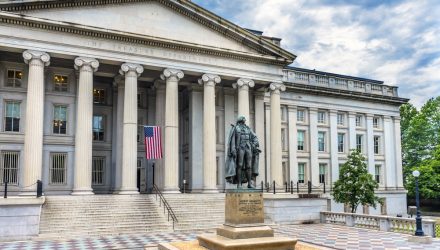One of the more fascinating financial statistics to emerge in recent weeks is that more than $6 trillion resided in money market funds and the like at the end of January.
That’s the result of yields on cash risk-free cash instruments surging following the Federal Reserve’s 2022 and 2023 interest rate hikes. Equity market observers believe that, as some of that cash comes off the sidelines, it could power more upside for stocks and that could well happen as yields decline. It could also be good news for bonds and related ETFs.
The reasoning is simple. ETFs such as the BondBloxx Bloomberg Ten Year Target Duration US Treasury ETF (XTEN) and even short-duration fare, including the BondBloxx Bloomberg Six Month Target Duration US Treasury ETF (XHLF) and the BondBloxx Bloomberg One Year Target Duration US Treasury ETF (XONE), offer price appreciation as yields decline because bond prices move inverse of yields.
Bond ETFs Offer Other Perks Over Cash, CDs
Due to the aforementioned high yields, many investors have embraced certificates of deposit. But ETFs such as XONE, XTEN, and others in the BondBloxx suite offer flexibility not found with CDs.
“With traditional CDs, you tie up your money for a fixed period in exchange for a fixed interest rate. The duration of a CD can range from a few weeks to years. CDs are more illiquid than Treasurys—you can access your cash before the investment reaches maturity, but it usually costs you,” reported Trina Paul for Fortune.
With so many brokerage firms offering commission-free trading on ETFs, the most common costs associated with owning an ETF like XHLF or XTEN is the annual fee, assuming it’s held for more than a year, and capital gains tax, if the position is sold at a profit. There is no penalty for leaving the trade early.
Additionally, fixed income ETFs offer more flexibility in terms of duration. That term usually isn’t used with CDs, but those products have fewer time options than Treasurys.
“Treasurys offer a wider range of maturities. They are a type of fixed-income investment and bond. Think of a Treasury as an IOU from the government—you’re giving the federal government money to fund its operations and, in return, you receive interest, either periodically or when the bond reaches maturity,” according to Fortune.
Treasury ETFs in the BondBloxx suite have durations spanning six months to 20 years.
For more news, information, and analysis, visit the US Treasuries & TIPS Fixed Income Channel.

